It's been a few months since the publication of the introductory post by A Life Story, and here we are to talk about evolution again, and how life has managed to cross the centuries, becoming what we all know today.
In the previous episode we had the opportunity to analyze the bricks that allowed the transition from "non-life" to "life", and the different theories that try to explain how this was possible; now, instead, it is time to know the first organisms that appeared on Earth.
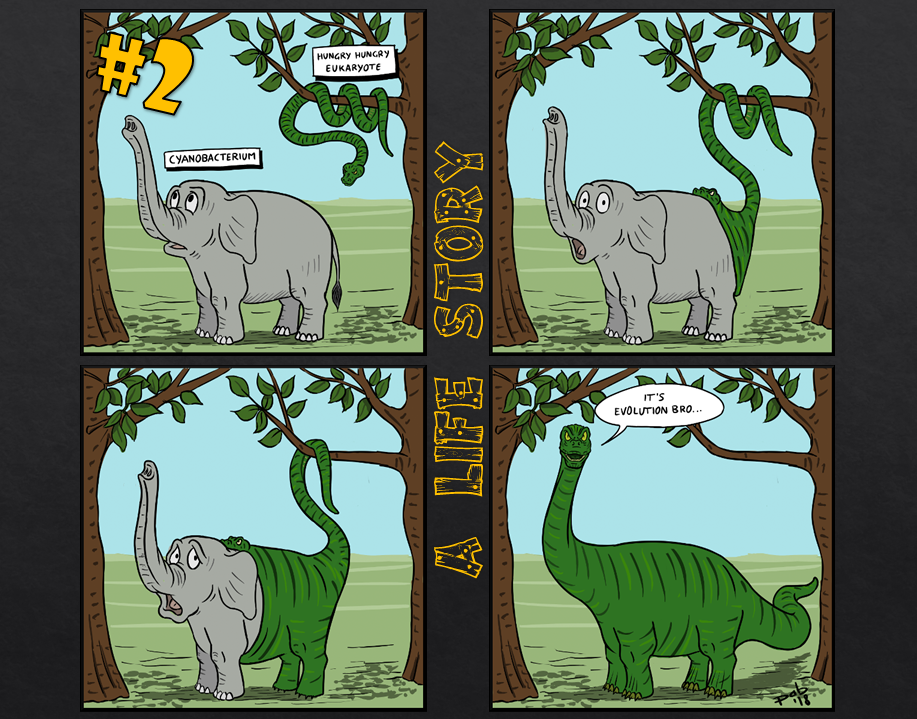
Attribution-ShareAlike CC BY-SA by @pab.ink thanks to @davinci.art
The prokaryotes
As we have already seen, the prokaryotes are now commonly thought to be the first organisms to have colonized our planet, and it is thought that ancestral prokaryotes were very similar to the current ones. They are characterized above all by their simplicity: they are, in fact, single-celled organisms with a cell membrane, a molecule of genetic information (almost always RNA) not contained in a nucleus, and a few other structures necessary for survival.
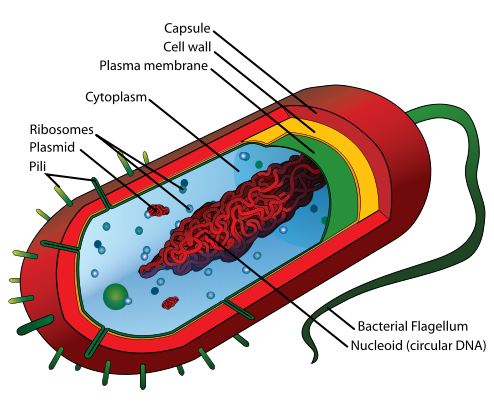
Image Public Domain - Source
The first organisms of this type were probably heterotrophic, from ετερος (different) and τροφή (nourishment); they were therefore not able to independently produce all the organic elements necessary for their existence, but had to recover them from the surrounding environment. In particular, it is thought that these were chemoetherotrofi, or heterotrophs able to exploit the organic substance of non-biological origin to produce energy. The organic substance collected was then used through inefficient metabolic pathways, such as fermentation and glycolysis. These metabolic pathways were in a sense "imposed" by the environment, as it was in the presence of a reducing atmosphere (or at most no oxidizing) and therefore low in oxygen, which therefore did not allow aerobic respiration. Normally we use the oxygen we breathe to perform the aerobic cell respiration, through which we burn the sugars to generate ATP; in the absence of oxygen, this extremely efficient reaction is prevented, and alternative but less efficient metabolic pathways are exploited. This ability to exploit alternative routes can be considered a sort of ancestral inheritance.
Being an inefficient process, the survival of a single organism required the use of many resources, which resulted in high competition and a great possibility for the development of alternative strategies.
Among the first alternative strategies evolved from organisms the most important was undoubtedly photosynthesis; bacteria capable of performing photosynthesis could use light and water to generate energy and essential compounds for life. These organisms are called autotrophics, and are characterized by their ability to create organic molecules using basic inorganic elements and energy not deriving from the assimilation of other organic substances. It is thought that the first forms of photosynthesis appeared not to generate oxygen, but rather nitrogen.
Water and carbon dioxide, however, were certainly widely available elements, and soon the oxygen photosynthesis took over. The autotrophic organisms began to acquire an important competitive advantage, growing in number. At this point, the large number of photosynthetic oxygen-producing bacteria began to "oxidize" the earth. This passage, however, was far from rapid: before being able to reach an appreciable concentration of oxygen in the atmosphere, the oxygen generated by the bacteria was used to oxidize the large amount of ferrous rocks and the oceans; only at that point the precious gas could begin to accumulate in the atmosphere, laying the foundations for the birth of the first organisms able to "breathe".
This important innovation radically changed the perspectives of life on earth. As said, in fact, aerobic breathing proved to be a process far more efficient than the ancient ones; this allowed organisms to increase their size considerably, starting to accumulate reserve substance. This, in turn, was responsible for the birth of the predation phenomenon: if the autotrophic organisms were able to produce more substance than was strictly necessary for survival, then it might be convenient to prey on these producers.
Thus were born the first bodies able to hunt, and unexpectedly laid the foundations for the transition to eukaryotic and multicellular life.
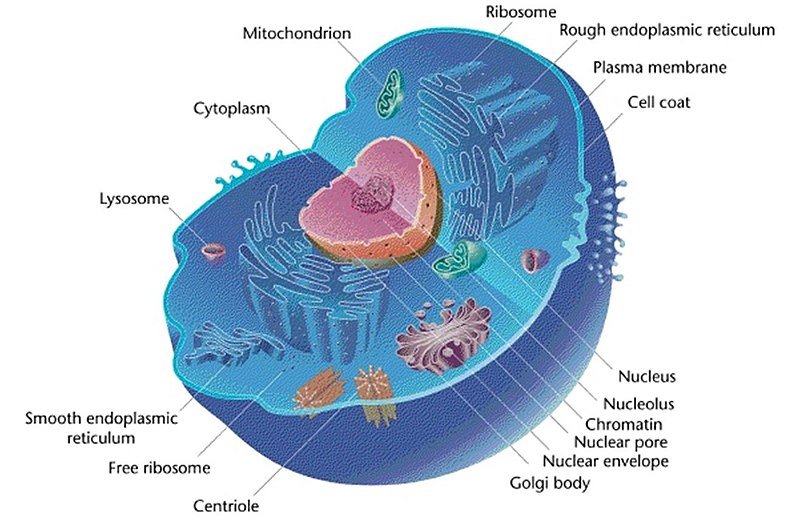
Image CC BY-SA 3.0 - Source
Eukaryotes
Although many researchers are still trying to clearly identify the birth of eukaryotes, it is most likely a process that has taken place slowly and gradually; eukaryotes, in fact, provide a much greater degree of complexity than prokaryotes, and it is unthinkable that this happened suddenly.
The main differences are identifiable at the DNA level and at the structural level. The DNA of eukaryotes is organized in introns and exons, and is endowed with important regulatory sequences, absent in prokaryotes; it is also associated with specific proteins that guarantee correct wrapping. At the structural level, the eukaryotic cell is very rich in organelles of different types, is equipped with a nuclear membrane that wraps the genetic material, and shows specific compartments for transcription and translation. Furthermore, sexual reproduction appears.
The most innovative aspect, however, certainly concerns the presence of intracellular organelles such as mitochondria and chloroplasts. In fact, they are most probably born as prokaryotic organisms, and become part of the eukaryotic cell following events of primary and secondary symbiosis. In particular, it is thought that a heterotrophic and predatory pro-eukaryotic cell has phagocytized a photosynthetic bacterium that originated the chloroplasts, and then an aerobic bacterium that formed the mitochondria. For some reason not well identified, or by chance, the precursors of chloroplasts and mitochondria, once phagocytosed, were not digested by the cell and, on the contrary, established a symbiotic relationship: the pro-eucaryotic cell provided protection and part necessary resources, while the future organelles produced ATP.
The endosymbiotic theory
The main exponent of the endosymbiotic theory above is Lynn Margulis, an American geneticist who has dedicated her career to the development of this model. Margulis herself, while recognizing the enormous steps taken to date, recognizes that some pieces of the puzzle are missing, and that we are still far from finding a definitive solution to the question.
The main point of discussion concerns the nature of the pro-eucaryotic cell: the definition of "eukaryote", in fact, provides for the presence of mitochondria or chloroplasts; it would therefore be conceptually wrong to define as a "eukaryote" the cell which, for the first time, has engulfed one of the precursors of these organelles. It was not at all a eukaryote.
Recent genetic analyzes, however, have shown that, in all likelihood, it was not even a prokaryote: differences with today's eukaryotes are far too abundant.
We have therefore begun to consider the hypothesis that the true precursors were the Archaea, or archaeabacteria; they are often included in the realm of Prokaryota, but in reality they differ a little from the actual prokaryotes, both for cellular organization and for their anatomy. Although the Archaea also show many differences with respect to eukaryotes, today they appear to be much closer to them from the phylogenetic point of view than the prokaryotes.
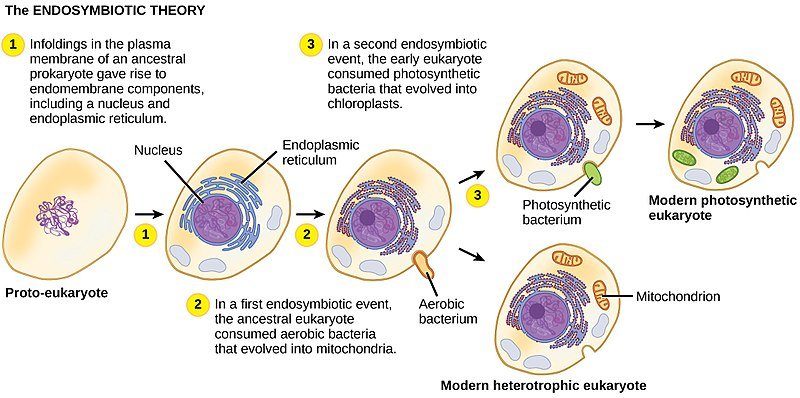
Image CC BY-SA 4.0 - Source
**But where do the eukaryotes come from? Most likely neither from one or the other. The phylogenetic trees we have traced up to now are increasingly challenged by new discoveries, and the idea that they may not be as linear as imagined begins to make its way into the scientific community. Events of symbiosis and crossings between different species, in fact, may have created over the centuries extremely complicated and intertwined trees. Even in the case of the birth of eukaryotes, therefore, the explanation may not be that simple. It is currently thought that the original pro-eucaryotic cell may have formed from a fusion of some sort between an Archaea and a prokaryotic eubacter.
The other actors of this symbiotic event, ie the precursors of the mitochondria and of the chloroplasts, remain to be framed.
If for the chloroplasts there is now enough agreement to identify a cyanobacterium as a precursor, the question is much more complex for mitochondria. In both cases, however, the question is made even more complicated by the fact that these organelles have over time transferred part of their genome into the cell nucleus, making certain identification complicated.
In any case, even the "mitochondria question" seems to have found a possible solution thanks to research published in recent years. In particular, a pathogenic bacterium of some tick species, belonging to the genus Midichloria, of the order of Rickettsiales has been identified; a particular species called precisely Midichloria mitochondrii has shown the highest degree of similarity to date identified with respect to current mitochondria. At the same time M. mitochondrii is characterized by the presence of many ancestral characteristics in common with ancient free-living bacteria, as a scourge that could be used to penetrate other organisms. The ability to enter another organism must necessarily have the capacity to resist digestion, and this could be a further element to prove its kinship with the current mitochondria.
Multi-cellular life
The elements up to now considered have allowed the centuries to increase the complexity of single-celled organisms, laying the foundations for the evolution of new functions. Complex functions, however, can sometimes require the interaction of individuals among them, and this has led the first eukaryotes to begin a process of aggregation in colonies. The colony offers significant advantages over isolated life, especially from the point of view of nutrient supply and defense.
Once grouped into colonies, the organisms began to realize that "dividing up the tasks" could be extremely advantageous, since each cell was free to specialize in acquiring a certain function, and specialization guaranteed greater efficiency. The first specializations were very simple, and were usually divided into structural, trophic and reproductive.
It is thought that the first organism to show such an organization was a seaweed of the genus Volvox; these algae first began to associate forming spherical-type colonies, and subsequently to show a division of tasks, with some cells that had the task of "reproducing" to generate new individuals; these cells did not think about recovering nutrients during their life, and were "looked after" by other cells in the colony.
This undoubtedly threw the basis for the transition to the multicellular life that we know today...
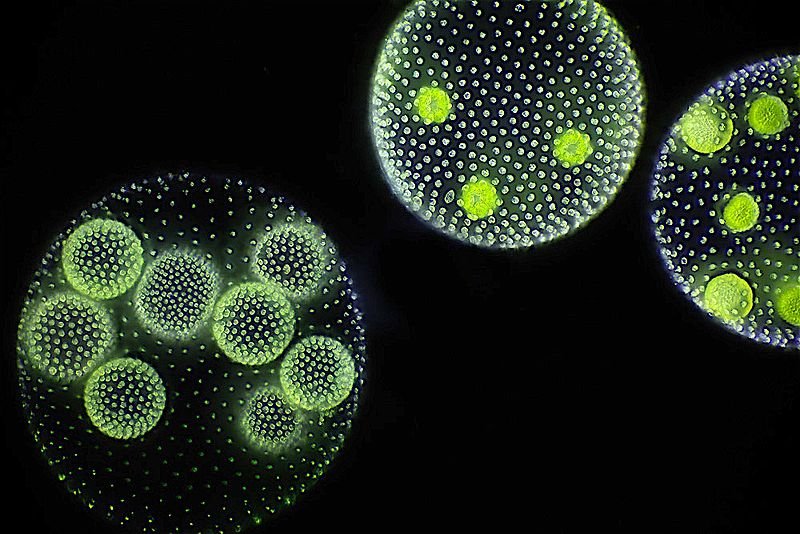
Image CC BY-SA 3.0 - Source

A Life Story #2 – Procarioti, eucarioti ed altre storie
Sono passati alcuni mesi dalla pubblicazione del post introduttivo di A Life Story, ed eccoci a parlare di nuovo di evoluzione, e di come la vita sia riuscita da attraversare i secoli divenendo quella che oggi tutti noi conosciamo.
Nella puntata precedente abbiamo avuto modo di analizzare i mattoni che hanno permesso il passaggio da “non vita” a “vita”, e le diverse teorie che provano a spiegare come questo sia stato possibile; ora, invece, è il momento di conoscere i primi organismi comparsi sulla Terra.

Attribution-ShareAlike CC BY-SA by @pab.ink thanks to @davinci.art
I procarioti
Come abbiamo già avuto modo di considerare, i procarioti sono ormai comunemente ritenuti i primi organismi ad aver colonizzato il nostro pianeta, e si pensa che i procarioti ancestrali fossero molto simili a quelli attuali. Si caratterizzano soprattutto per la loro semplicità: si tratta, infatti, di organismi unicellulari dotati di una membrana cellulare, una molecola di informazione genetica (quasi sempre RNA) non contenuta in un nucleo, e poche altre strutture necessarie alla sopravvivenza.

Image Public Domain - Source
I primi organismi di questo tipo erano probabilmente eterotrofi, da ετερος (diverso) e τροφή (nutrimento); essi non erano quindi in grado di produrre in autonomia tutti gli elementi organici necessari per la propria esistenza, ma dovevano recuperarli dall’ambiente circostante. In particolare, si pensa che si trattasse di chemioeterotrofi, ossia eterotrofi in grado di sfruttare la sostanza organica di provenienza non biologica per produrre energia. La sostanza organica raccolta veniva poi utilizzata attraverso via metaboliche poco efficienti, come la fermentazione e la glicolisi. Queste vie metaboliche erano in un certo senso “imposte” dall’ambiente, in quanto si era in presenza di un’atmosfera riducente (o al più non ossidante) e quindi povera di ossigeno, che non permetteva quindi la respirazione aerobia. Normalmente noi utilizziamo l’ossigeno che respiriamo per eseguire proprio la respirazione cellulare aerobia, attraverso la quale bruciamo gli zuccheri per generare ATP; in assenza di ossigeno, questa reazione estremamente efficiente è impedita, e si sfruttano vie metaboliche alternative ma meno efficienti. Questa capacità di sfruttare vie alternative può essere considerata una sorta di eredità ancestrale.
Trattandosi di un processo poco efficiente, la sopravvivenza di un solo organismo richiedeva l’impiego di parecchie risorse, il che si traduceva in un’elevata competizione e in una grande possibilità di sviluppo di strategie alternative.
Tra le prime strategie alternative evolute dagli organismi la più importante fu senza dubbio la fotosintesi; i batteri in grado di eseguire fotosintesi potevano utilizzare la luce e l’acqua per generare energia e composti indispensabili per la vita. Questi organismi sono detti autotrofi, e si contraddistinguono per la capacità di creare appunto molecole organiche utilizzando come base elementi inorganici e energia non derivante dall’assimilazione di altre sostanze organiche. Si pensa che le prime forme di fotosintesi comparse non generassero ossigeno, ma piuttosto azoto.
L’acqua e l’anidride carbonica, però, erano sicuramente elementi largamente disponibili, e ben presto la fotosintesi ossigenica prese il sopravvento. Gli organismi autotrofi iniziarono ad acquisire un importante vantaggio competitivo, crescendo di numero. A questo punto, il gran numero di batteri fotosintetici che producevano ossigeno iniziò a “ossidare” la terra. Questo passaggio, però, fu tutt’altro che rapido: prima di poter raggiungere una concentrazione apprezzabile di ossigeno in atmosfera, l’ossigeno generato dai batteri venne impiegato per ossidare la grande quantità di rocce ferrose e gli oceani; solo a quel punto il prezioso gas poté cominciare ad accumularsi in atmosfera, gettando le basi per la nascita dei primi organismi in grado di “respirare”.
Questa importante innovazione cambiò radicalmente le prospettive della vita sulla terra. Come detto, infatti, la respirazione aerobia si dimostrò essere un processo estremamente più efficiente rispetto a quelli antichi; questo permise agli organismi di aumentare notevolmente le proprie dimensioni, iniziando ad accumulare sostanza di riserva. Questo, a sua volta, fu responsabile della nascita del fenomeno della predazione: se gli organismi autotrofi erano in grado di produrre più sostanza di quella strettamente necessaria alla sopravvivenza, allora poteva essere conveniente predare questi produttori.
Nacquero così i primi organismi in grado di cacciare, e vennero gettate inaspettatamente le basi per il passaggio alla vita eucariotica e pluricellulare.

Image CC BY-SA 3.0 - Source
Gli eucarioti
Nonostante ancora oggi molti ricercatori stiano tentando di identificare con chiarezza la nascita degli eucarioti, molto probabilmente si tratta di un processo avvenuto lentamente e in modo graduale; gli eucarioti, infatti, prevedono un grado di complessità molto maggiore rispetto ai procarioti, ed è impensabile che questo sia avvenuto improvvisamente.
Le principali differenze sono identificabili a livello di DNA e a livello strutturale. Il DNA degli eucarioti è organizzato in introni ed esoni, ed è dotato di importanti sequenze regolatrici, assenti nei procarioti; esso è inoltre associato a specifiche proteine che ne garantiscono il corretto avvolgimento. A livello strutturale, la cellula eucariotica è molto ricca di organelli di diverso tipo, è dotata di una membrana nucleare che avvolge il materiale genetico, e mostra specifici comparti per la trascrizione e la traduzione. Appare inoltre la riproduzione sessuale vera e propria.
L’aspetto più innovativo, comunque, riguarda sicuramente la presenza di organelli intracellulari come mitocondri e cloroplasti. Essi, infatti, nascono molto probabilmente come organismi procarioti, ed entrano a far parte della cellula eucariotica in seguito a eventi di simbiosi primaria e secondaria. In particolare, si pensa che una cellula pro-eucariotica eterotrofa e predatrice abbia fagocitato prima un batterio fotosintetico che ha originato i cloroplasti, e poi un batterio aerobio che ha formato i mitocondri. Per qualche motivo non ben identificato, o per caso, i precursori dei cloroplasti e dei mitocondri, una volta fagocitati, non sono stati digeriti dalla cellula e, al contrario, hanno instaurato una relazione di simbiosi: la cellula pro-eucariotica forniva protezione e parte delle risorse necessarie, mentre i futuri organelli producevano ATP.
La teoria endosimbiontica
La principale esponente della teoria endosimbiontica sopra esposta è Lynn Margulis, una genetista statunitense che ha dedicato la sua carriera alla messa a punto di questo modello. La stessa Margulis, pur riconoscendo gli enormi passi compiuti fino ad oggi, riconosce che mancano alcuni tasselli del puzzle, e che siamo ancora lontani dal trovare una soluzione definitiva alla questione.
Il principale punto di discussione riguarda la natura della cellula pro-eucariotica: la definizione di “eucariote”, infatti, prevede la presenza di mitocondri o cloroplasti; sarebbe quindi concettualmente sbagliato definire come “eucariote” la cellula che, per la prima volta, ha fagocitato uno dei precursori di questi organelli. Essa non era affatto un eucariote.
Recenti analisi genetiche, però, hanno dimostrato che, con ogni probabilità, non si trattava nemmeno di un procariote: sono infatti decisamente troppo abbondanti le differenze con gli eucarioti di oggi.
Si è cominciato quindi a considerare l’ipotesi che i veri precursori fossero gli Archaea, o archeobatteri; essi vengono spesso inclusi nel regno dei Prokaryota, ma in realtà di discostano non poco dai procarioti veri e propri, sia per l’organizzazione cellulare che per la loro anatomia. Nonostante anche gli Archaea mostrino numerose differenze rispetto agli eucarioti, ci appaiono oggi molto più vicini ad essi dal punto di vista filogenetico rispetto ai procarioti.

Image CC BY-SA 4.0 - Source
Ma da dove arrivano allora gli eucarioti? Molto probabilmente né dagli uni né dagli altri. Gli alberi filogenetici che abbiamo tracciato fino ad oggi vengono sempre più messi in crisi da nuovi scoperte, e inizia a farsi strada nella comunità scientifica l’idea che essi possano non essere così lineari come immaginato. Eventi di simbiosi e incroci tra specie diverse, infatti, potrebbero aver creato nel corso dei secoli alberi estremamente complicati e intrecciati tra loro. Anche nel caso nella nascita degli eucarioti, quindi, la spiegazione potrebbe non essere così semplice. Attualmente si pensa che la cellula pro-eucariotica originale possa essersi formata da una fusione di qualche tipo tra un Archaea e un eubatterio procariotico.
Restano poi da inquadrare gli altri attori di questo evento simbiontico, ossia i precursori dei mitocondri e dei cloroplasti.
Se per i cloroplasti si è ormai abbastanza concordi nell’identificare un cianobatterio come precursore, la questione è decisamente più complessa per i mitocondri. In entrambi i casi, comunque, la questione è resa ancora più complicata dal fatto che questi organelli hanno nel corso del tempo traferito parte del loro genoma nel nucleo della cellula, rendendone complicata l’identificazione certa.
Ad ogni modo, anche la “questione mitocondri” pare aver trovato una possibile soluzione grazie a ricerche pubblicate negli ultimi anni. In particolare, è stato identificato un batterio patogeno di alcune specie di zecche, appartenente al genere Midichloria, dell’ordine delle Rickettsiales; una particolare specie chiamata appunto Midichloria mitochondrii ha mostrato il più alto grado di similitudine ad oggi identificato rispetto ai mitocondri attuali. Allo stesso tempo M. mitochondrii si caratterizza per la presenza di molte caratteristiche ancestrali in comune con antichi batteri a vita libera, come un flagello che poteva essere utilizzato per penetrare all’interno di altri organismi. La capacità di entrare in un altro organismo doveva necessariamente comportare la capacità di resistere alla digestione, e questo potrebbe essere un ulteriore elemento a prova della sua parentela con i mitocondri attuali.
La vita pluricellulare
Gli elementi fino a qui considerati hanno permesso lungo i secoli di incrementare la complessità degli organismi unicellulari, gettando le basi per l’evoluzione di nuove funzioni. Funzioni complesse, però, posso talvolta richiedere l’interazione degli individui tra loro, e questo ha portato i primi eucarioti a cominciare un processo di aggregazione in colonie. La colonia offre notevoli vantaggi rispetto alla vita isolata, soprattutto dal punto di vista dell’approvvigionamento di nutrienti e della difesa.
Una volta raggruppati in colonie, gli organismi hanno iniziato a rendersi conto che “dividere i compiti” poteva risultare estremamente vantaggioso, in quanto ogni cellula era libera di specializzarsi nell’assolvere una determinata funzione, e la specializzazione garantiva una maggior efficienza. Le prime specializzazioni erano molto semplici, e si suddividevano solitamente in strutturale, trofica e riproduttiva.
Si pensa che il primo organismo a mostrare un’organizzazione di questo tipo fu un’alga del genere Volvox; queste alghe iniziarono prima ad associarsi formando colonie ti tipo sferico, e successivamente a mostrare una suddivisione dei compiti, con alcune cellule che avevano il compito di “riprodursi” per generare nuovi individui; queste cellule non pensavano a recuperare nutrienti nel corso della loro vita, e venivano “accudite” da altre cellule della colonia.
Questo gettò indiscutibilmente le basi per il passaggio alla vita pluricellulare che oggi conosciamo…

Image CC BY-SA 3.0 - Source

Immagine CC0 Creative Commons, si ringrazia @mrazura per il logo ITASTEM.
CLICK HERE AND VOTE FOR DAVINCI.WITNESS
References
- Lynn Margulis. Serial endosymbiotic theory (SET)and composite individuality.
- Ashwini Kumar Lal (2008). Origin of Life.
- Giovanni Giacometti, Giorgio Mario Giacometti (2010). Evolution of Photosynthesis and Respiration: Which Came First?.
- David L. Kirk. [David L. Kirk](Volvox: A Search for the Molecular and Genetic Origins of Multicellularity).
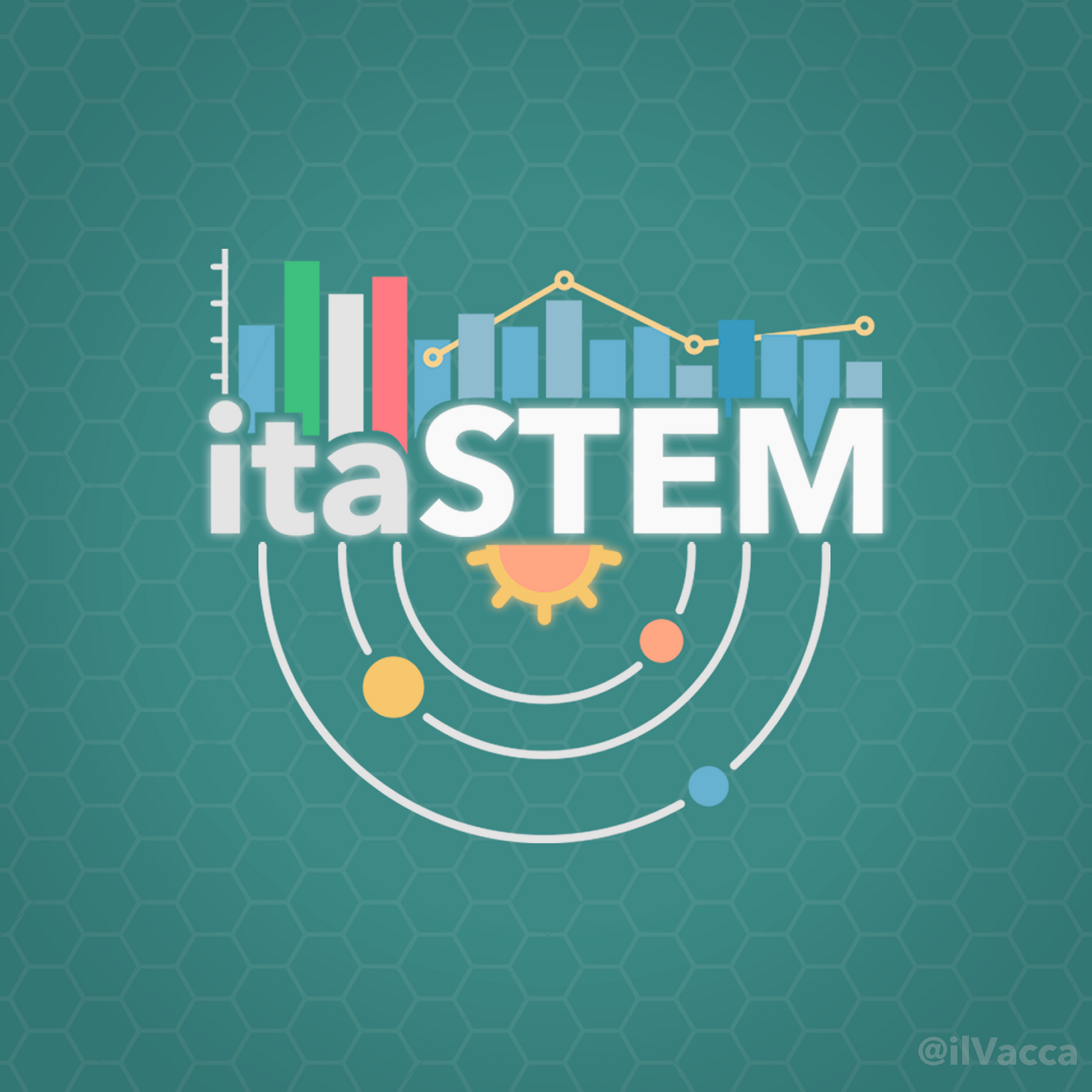
Logo creato da @ilvacca
